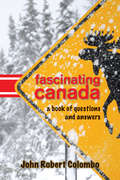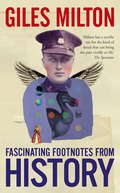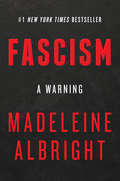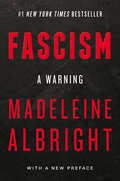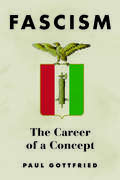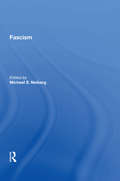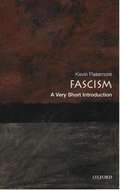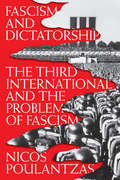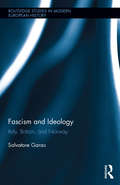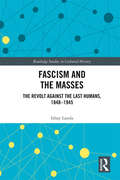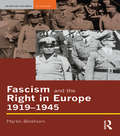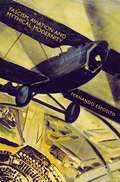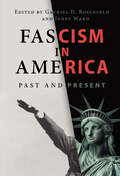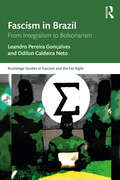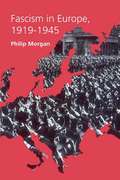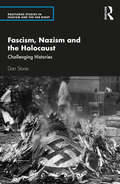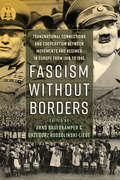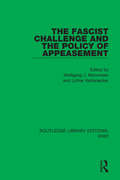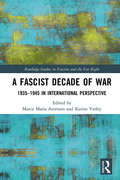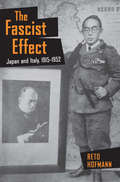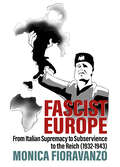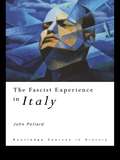- Table View
- List View
Fascinated
by Marissa DayPleasure was an elusive dream... Alicia Hartwell has never experienced the pleasure of passion. Despite all her efforts to comprehend the notion of romantic love, it has remained an utterly foreign concept to her. Resigned to the life of a spinster, Alicia is therefore stunned when she receives a marriage proposal from the highly eligible bachelor, Lord Carstairs. ...until she met him. But Lord Edward Carstairs is not a normal nobleman. He's a Catalyst--able to draw magical power from the natural world to use in spells by human Sorcerers. He senses that Alicia is a victim of enchantment, one that has suppressed her erotic urges. Powerfully attracted to her, he's certain that he's the one to help her experience pleasure for the first time. But as Edward and Alicia's mutual passion burns hot, their fragile love and trust could be threatened by family secrets, and a new magical intrigue neither imagined.
Fascinating Canada: A Book of Questions and Answers
by John Robert ColomboFew people have read as widely in the field of Canadiana as has John Robert Colombo. The curiosity of this Toronto writer, editor, and anthologist knows few if any bounds when it comes to the lore, literature, history, culture, and character of Canada. He has an inquiring mind and he seems able to find national and even international twists to subjects of interest or importance.Fascinating Canada, his latest book, is the product of over half a century of research, reading, writing, and thinking. Some years ago the author produced a trilogy of question-and-answer books 1,000 Questions about Canada, 999 Questions about Canada, 1,000 Questions about Canada. The first two were published by Doubleday Canada, the third one in 2001 by Dundurn Press. The same format is adapted to the material in the present book, but this time the majority of the questions are short whereas a good many of the answers are quite long discussions of the subjects at hand: concise questions followed by considered answers.Here is a book about the Canadian past, present, and future. The information in Fascinating Canada is organized under four headings (People, Places, Things, Ideas) and there is a detailed Index for ready reference. This book may serve as a work of popular reference, but it has been written to stimulate inquiry and spark the sense of surprise in the minds of readers who know something about this amazing country but perhaps not as much as the author. Open this book and begin to read … and match wits with author and researcher John Robert Colombo.
Fascinating Footnotes From History: Fascinating Footnotes from History
by Giles Milton'Giles Milton is a man who can take an event from history and make it come alive . . . an inspiration for those of us who believe that history can be exciting and entertaining' Matthew Redhead, The TimesDid you know that Hitler took cocaine? That Stalin robbed a bank? That Charlie Chaplin's corpse was filched and held to ransom? Giles Milton is a master of historical narrative: in his characteristically engaging prose, Fascinating Footnotes From History details one hundred of the quirkiest historical nuggets; eye-stretching stories that read like fiction but are one hundred per cent fact.There is Hiroo Onoda, the lone Japanese soldier still fighting the Second World War in 1974; Agatha Christie, who mysteriously disappeared for eleven days in 1926; and Werner Franz, a cabin boy on the Hindenburg who lived to tell the tale when it was engulfed in flames in 1937. Fascinating Footnotes From History also answers who ate the last dodo, who really killed Rasputin and why Sergeant Stubby had four legs. Peopled with a gallery of spies, rogues, cannibals, adventurers and slaves, and spanning twenty centuries and six continents, Giles Milton's impeccably researched footnotes shed light on some of the most infamous stories and most flamboyant and colourful characters (and animals) from history.(Previoulsy published in four individual epub volumes: When Hitler Took Cocaine, When Stalin Robbed a Bank, When Lenin Lost His Brain and When Churchill Slaughtered Sheep.)
Fascinating Footnotes From History
by Giles Milton'Giles Milton is a man who can take an event from history and make it come alive . . . an inspiration for those of us who believe that history can be exciting and entertaining' Matthew Redhead, The TimesDid you know that Hitler took cocaine? That Stalin robbed a bank? That Charlie Chaplin's corpse was filched and held to ransom? Giles Milton is a master of historical narrative: in his characteristically engaging prose, Fascinating Footnotes From History details one hundred of the quirkiest historical nuggets; eye-stretching stories that read like fiction but are one hundred per cent fact.There is Hiroo Onoda, the lone Japanese soldier still fighting the Second World War in 1974; Agatha Christie, who mysteriously disappeared for eleven days in 1926; and Werner Franz, a cabin boy on the Hindenburg who lived to tell the tale when it was engulfed in flames in 1937. Fascinating Footnotes From History also answers who ate the last dodo, who really killed Rasputin and why Sergeant Stubby had four legs. Peopled with a gallery of spies, rogues, cannibals, adventurers and slaves, and spanning twenty centuries and six continents, Giles Milton's impeccably researched footnotes shed light on some of the most infamous stories and most flamboyant and colourful characters (and animals) from history.(Previoulsy published in four individual epub volumes: When Hitler Took Cocaine, When Stalin Robbed a Bank, When Lenin Lost His Brain and When Churchill Slaughtered Sheep.)
Fascism: A Warning
by Madeleine Albright<P>A personal and urgent examination of Fascism in the twentieth century and how its legacy shapes today’s world, written by one of America’s most admired public servants, the first woman to serve as U.S. secretary of stateA Fascist, observes Madeleine Albright, “is someone who claims to speak for a whole nation or group, is utterly unconcerned with the rights of others, and is willing to use violence and whatever other means are necessary to achieve the goals he or she might have.” <P>The twentieth century was defined by the clash between democracy and Fascism, a struggle that created uncertainty about the survival of human freedom and left millions dead. Given the horrors of that experience, one might expect the world to reject the spiritual successors to Hitler and Mussolini should they arise in our era. <P>In Fascism: A Warning, Madeleine Albright draws on her experiences as a child in war-torn Europe and her distinguished career as a diplomat to question that assumption.Fascism, as she shows, not only endured through the twentieth century but now presents a more virulent threat to peace and justice than at any time since the end of World War II. <P>The momentum toward democracy that swept the world when the Berlin Wall fell has gone into reverse. The United States, which historically championed the free world, is led by a president who exacerbates division and heaps scorn on democratic institutions. In many countries, economic, technological, and cultural factors are weakening the political center and empowering the extremes of right and left. Contemporary leaders such as Vladimir Putin and Kim Jong-un are employing many of the tactics used by Fascists in the 1920s and 30s. <P>Fascism: A Warning is a book for our times that is relevant to all times. Written by someone who has not only studied history but helped to shape it, this call to arms teaches us the lessons we must understand and the questions we must answer if we are to save ourselves from repeating the tragic errors of the past. <P><b>A New York Times Bestseller</b>
Fascism: A Warning
by Madeleine Albright#1 New York Times Bestseller Best Books of 2018 --The EconomistA personal and urgent examination of Fascism in the twentieth century and how its legacy shapes today’s world, written by one of America’s most admired public servants, the first woman to serve as U.S. secretary of stateA Fascist, observes Madeleine Albright, “is someone who claims to speak for a whole nation or group, is utterly unconcerned with the rights of others, and is willing to use violence and whatever other means are necessary to achieve the goals he or she might have.” The twentieth century was defined by the clash between democracy and Fascism, a struggle that created uncertainty about the survival of human freedom and left millions dead. Given the horrors of that experience, one might expect the world to reject the spiritual successors to Hitler and Mussolini should they arise in our era. In Fascism: A Warning, Madeleine Albright draws on her experiences as a child in war-torn Europe and her distinguished career as a diplomat to question that assumption.Fascism, as she shows, not only endured through the twentieth century but now presents a more virulent threat to peace and justice than at any time since the end of World War II. The momentum toward democracy that swept the world when the Berlin Wall fell has gone into reverse. The United States, which historically championed the free world, is led by a president who exacerbates division and heaps scorn on democratic institutions. In many countries, economic, technological, and cultural factors are weakening the political center and empowering the extremes of right and left. Contemporary leaders such as Vladimir Putin and Kim Jong-un are employing many of the tactics used by Fascists in the 1920s and 30s.Fascism: A Warning is a book for our times that is relevant to all times. Written by someone who has not only studied history but helped to shape it, this call to arms teaches us the lessons we must understand and the questions we must answer if we are to save ourselves from repeating the tragic errors of the past.
Fascism: The Career of a Concept
by Paul GottfriedWhat does it mean to label someone a fascist? Today, it is equated with denouncing him or her as a Nazi. But as intellectual historian Paul E. Gottfried writes in this provocative yet even-handed study, the term's meaning has evolved over the years. Gottfried examines the semantic twists and turns the term has endured since the 1930s and traces the word's polemical function within the context of present ideological struggles. Like "conservatism," "liberalism," and other words whose meanings have changed with time, "fascism" has been used arbitrarily over the years and now stands for a host of iniquities that progressives, multiculturalists, and libertarians oppose, even if they offer no single, coherent account of the historic evil they condemn. Certain factors have contributed to the term's imprecise usage, Gottfried writes, including the equation of all fascisms with Nazism and Hitler, as well as the rise of a post-Marxist left that expresses predominantly cultural opposition to bourgeois society and its Christian and/or national components. Those who stand in the way of social change are dismissed as "fascist," he contends, an epithet that is no longer associated with state corporatism and other features of fascism that were once essential but are now widely ignored. Gottfried outlines the specific historical meaning of the term and argues that it should not be used indiscriminately to describe those who hold unpopular opinions. His important study will appeal to political scientists, intellectual historians, and general readers interested in politics and history.
Fascism (The\international Library Of Essays On Political History)
by Michael S. NeibergThis volume presents the best writings on the origins, development, success and failure of fascism outside Germany. By treating the problem in a global context, these essays together add tremendous complexity to our understanding of one of history‘s most destructive political movements. The collection covers theories, origins and definitions of fascism, fascism in power, fascism in opposition, and fascism in a global and comparative setting.
Fascism: A Very Short Introduction
by Kevin PassmoreWhat is fascism? Is it revolutionary? Or is it reactionary? This book argues that it is both: fascism unleashes violence against the left and ethnic minorities, but also condemns the bourgeoisie for its 'softness'. Kevin Passmore opens his book with a series of 'scenes from fascist life' - a secret meeting of the Romanian Iron Guard; Mussolini meeting the king of Italy; a rally of Hungarian doctors calling for restrictions on the number of Jews entering the profession; the shooting of 1800 Jews by Reserve Police Battalion 101 at Jozefow in Poland in July 1942. He then looks at the paradoxes of fascism through its origins in the political and social crisis of the late nineteenth century, the history of fascist movements and regimes in Italy and Germany, and the fortunes of 'failed' fascist movements in Romania, Hungary and Spain. He shows how fascism used and uses propaganda and popular culture to propagate itself and how it exported its ideas outside Europe, through Nazi and Spanish post-war escape routes to Latin America, for instance. The book concludes with a discussion of the recent revival of the extreme right in Austria, Italy, France, and Russia.
Fascism and Dictatorship: The Third International and the Problem of Fascism
by Nicos PoulantzasPoulantzas’s book is the first major Marxist study of German and Italian fascism to appear since the Second World War. It carefully distinguishes between fascism as a mass movement before the seizure of power and fascism as an entrenched machinery of dictatorship. It compares the distinct class components of the counter-revolutionary blocs mobilzed by fascism in Germany and Italy; analyses the changing relations between the petty bourgeoisie and big capital in the evolution of fascism; discusses the structures of the fascist state itself, as an emergency regime for the defense of capital; and provides a sustained and documented criticism of official Comintern attitudes and policies towards fascism in the fateful years after the Versailles settlement. Fascism and Dictatorship represents a challenging synthesis of factual evidence and conceptual analysis that has been rare in Marxist political theory to date.
Fascism and Ideology: Italy, Britain, and Norway (Routledge Studies in Modern European History)
by Salvatore GarauThis book develops a number of new conceptual tools to tackle some of the most hotly debated issues concerning the nature of fascism, using three profoundly different national contexts in the inter-war years as case studies: Italy, Britain and Norway. It explores how fascist ideology was the result of a sustained struggle between competing internal factions, which created a precarious, but also highly dynamic, balance between revolutionary/totalitarian and conservative/authoritarian tendencies. Such a balance meant that these movements were hybrids with a surprising degree of internal diversity, which cannot be explained away as simple opportunism or lack of ideological substance. The book's focus on fascist ideology's internal variety and aggregative potential leads it to argue that when fascism "succeeded," this was less an effect of its revolutionary ideas, than of the opposite – namely, its power to integrate elements from other pre-existing ideologies. Given the prevailing opinion that fascism is revolutionary by definition, the book ultimately poses a challenge to the dominant view in the field of fascist studies.
Fascism and the Masses: The Revolt Against the Last Humans, 1848-1945 (Routledge Studies in Cultural History)
by Ishay LandaHighlighting the "mass" nature of interwar European fascism has long become commonplace. Throughout the years, numerous critics have construed fascism as a phenomenon of mass society, perhaps the ultimate expression of mass politics. This study deconstructs this long-standing perception. It argues that the entwining of fascism with the masses is a remarkable transubstantiation of a movement which understood and presented itself as a militant rejection of the ideal of mass politics, and indeed of mass society and mass culture more broadly conceived. Thus, rather than "massifying" society, fascism was the culmination of a long effort on the part of the élites and the middle-classes to de-massify it. The perennially menacing mass – seen as plebeian and insubordinate – was to be drilled into submission, replaced by supposedly superior collective entities, such as the nation, the race, or the people. Focusing on Italian fascism and German National Socialism, but consulting fascist movements and individuals elsewhere in interwar Europe, the book incisively shows how fascism is best understood as ferociously resisting what Elias referred to as "the civilizing process" and what Marx termed "the social individual." Fascism, notably, was a revolt against what Nietzsche described as the peaceful, middling and egalitarian "Last Humans."
Fascism and the Right in Europe 1919-1945 (Seminar Studies)
by Martin BlinkhornThis new text places interwar European fascism squarely in its historical context and analyses its relationship with other right wing, authoritarian movements and regimes. Beginning with the ideological roots of fascism in pre-1914 Europe, Martin Blinkhorn turns to the problem-torn Europe of 1919 to 1939 in order to explain why fascism emerged and why, in some settings, it flourished while in others it did not. In doing so he considers not just the 'major' fascist movements and regimes of Italy and Germany but the entire range of fascist and authoritarian ideas, movements and regimes present in the Europe of 1919-1945.
Fascism, Architecture, and the Claiming of Modern Milan, 1922-1943
by Lucy M. MaulsbyFascism, Architecture, and the Claiming of Modern Milan, 1922-1943 chronicles the dramatic architectural and urban transformation of Milan during the nearly twenty years of fascist rule. The commercial and financial centre of Italy and the birthplace of fascism, Milan played a central role in constructing fascism's national image and identity as it advanced from a revolutionary movement to an established state power.Using a wide range of archival sources, Lucy M. Maulsby analyses the public buildings, from the relatively modest party headquarters to the grandiose Palace of Justice and the Palazzo del Popolo d'Italia, through which Mussolini intended to enhance the city's image and solidify fascism's presence in Milan. Maulsby establishes the extent to which Milan's economic structure, social composition, and cultural orientation affected Il Duce's plans for the city, demonstrating the influences on urban development that were beyond the control of the fascist regime. By placing Milan's urban change in its historic context, this book expands our understanding of the relationship between fascism and the modern city.
Fascism, Aviation and Mythical Modernity
by Fernando EspositoFlying and the pilot were significant metaphors of fascism's mythical modernity. Fernando Esposito traces the changing meanings of these highly charged symbols from the air show in Brescia, to the sky above the trenches of the First World War to the violent ideological clashes of the interwar period.
Fascism in America: Past and Present
by Gavriel D. Rosenfeld Janet WardHas fascism arrived in America? In this pioneering book, Gavriel D. Rosenfeld and Janet Ward have gathered experts to survey the history of fascism in the United States. Although the US established a staunch anti-fascist reputation by defeating the Axis powers in World War II, the unsettling truth is that fascist ideas have long been present within American society. Since the election of Donald Trump as President in 2016, scholars have debated whether Trumpism should be seen as an outgrowth of American conservatism or of a darker – and potentially fascist – tradition. Fascism in America contributes to this debate by examining the activities of interwar right-wing groups like the Silver Shirts, the KKK, and the America First movement, as well as the post-war rise of Black antifascism and white vigilantism, the representation of American Nazis in popular culture, and policy options for combating right-wing extremism.
Fascism in Brazil: From Integralism to Bolsonarism (Routledge Studies in Fascism and the Far Right)
by Leandro Pereira Gonçalves Odilon Caldeira NetoFascism in Brazil analyzes the long and varied history of the Brazilian extreme right. The book examines integralism, the main historical Brazilian fascist ideology represented by Brazilian integralist Action, the largest fascist movement outside Europe. It analyzes the Integralist tradition from its founding in 1932 to the present day. It examines how Brazilian integralist Action began with its leader Plínio Salgado's trip to Fascist Italy, and how the Popular Representation Party developed integralism in the postwar era. The book also explores the support of integralists for the 1964 military coup and the role of integralists in the dictatorship. The contemporary extreme right in Brazil is still inspired by the integralist slogans of the 1930s as they seek to find political space and to demonstrate their strength. Contemporary turning points in neo-integralism were the involvement of neo-fascist groups, including neo-integralists, in the upheavals that culminated in the election of Brazilian President Jair Bolsonaro, as well as in the attack on the headquarters of comedy group Porta dos Fundos in Rio de Janeiro in 2019. This book will be of interest to students and scholars researching comparative fascist studies, the history of the far right, and Brazilian and Latin American history and politics.
Fascism in Europe, 1919-1945
by Philip MorganFascism in Europe, 1919-1945 surveys the phenomenon which is still the object of interest and debate over fifty years after its defeat in the Second World War. It introduces the recent scholarship and continuing debates on the nature of fascism as well as the often contentious contributions by foreign historians and political scientists. From the pre-First World War intellectual origins of Fascism to its demise in 1945, this book examines: * the two 'waves' of fascism - in the immediate post-war period and in the late 1920s and early 1930s* whether the European crisis created by the Treaty of Versailles allowed fascism to take root* why fascism came to power in Italy and Germany, but not anywhere else in Europe* fascism's own claim to be an international and internationalist movement* the idea of 'totalitarianism' as the most useful and appropriate way of analyzing the fascist regimes.
Fascism, Nazism and the Holocaust: Challenging Histories (Routledge Studies in Fascism and the Far Right)
by Dan StoneThis book contains essays on Fascism, Nazism and the Holocaust by distinguished scholar Professor Dan Stone. It examines issues such as race science and the racial state, Nazi race ideology, slave labour, concentration camps, British reaction to the rise of Nazism and the Holocaust, the search for missing persons in the chaos of postwar Europe and the postwar revival of fascism. Though mainly focused on Nazi Germany, it also makes comparisons with other fascist movements and regimes in Romania and elsewhere. This book will be of great interest to scholars and students of antisemitism, fascism, Nazism, World War II, genocide studies and the Holocaust.
Fascism without Borders: Transnational Connections and Cooperation between Movements and Regimes in Europe from 1918 to 1945
by Grzegorz Rossolinski-Liebe Arnd BauerkämperIt is one of the great ironies of the history of fascism that, despite their fascination with ultra-nationalism, its adherents understood themselves as members of a transnational political movement. While a true "Fascist International" has never been established, European fascists shared common goals and sentiments as well as similar worldviews. They also drew on each other for support and motivation, even though relations among them were not free from misunderstandings and conflicts. Through a series of fascinating case studies, this expansive collection examines fascism's transnational dimension, from the movements inspired by the early example of Fascist Italy to the international antifascist organizations that emerged in subsequent years.
The Fascist Challenge and the Policy of Appeasement (Routledge Library Editions: WW2 #8)
by Wolfgang J. Mommsen and Lothar KettenackerThis book, first published in 1983, illustrates the domestic and internal dimension of appeasement and explores the political options open to the western powers in the run up to the Second World War. It looks at the factors pointing in the direction of a general settlement with the dictators: limitation of resources and strategic over-commitment by Britain; economic decline and financial exhaustion of France; lack of support from the United States and the Soviet Union.
A Fascist Decade of War: 1935-1945 in International Perspective (Routledge Studies in Fascism and the Far Right)
by Marco Maria AterranoFrom the invasion of Ethiopia in 1935 through to the waning months of the World War II in 1945, Fascist Italy was at war. This Fascist decade of war comprised an uninterrupted stretch of military and political engagements in which Italian military forces were involved in Abyssinia, Spain, Albania, France, Greece, the Soviet Union, North Africa and the Middle East. As a junior partner to Nazi Germany, only entering the war in June 1940, Italy is often seen as a relatively minor player in World War II. However, this book challenges much of the existing scholarship by arguing that Fascist Italy played a significant and distinct role in shaping international relations between 1935 and 1945, creating a Fascist decade of war.
The Fascist Effect: Japan and Italy, 1915–1952
by Reto HofmannDuring the interwar period, Japanese intellectuals, writers, activists, and politicians, although conscious of the many points of intersection between their politics and those of Mussolini, were ambivalent about the comparability of Imperial Japan and Fascist Italy. In The Fascist Effect, Reto Hofmann uncovers the ideological links that tied Japan to Italy, drawing on extensive materials from Japanese and Italian archives to shed light on the formation of fascist history and practice in Japan and beyond. Moving between personal experiences, diplomatic and cultural relations, and geopolitical considerations, Hofmann shows that interwar Japan found in fascism a resource to develop a new order at a time of capitalist crisis.Japanese thinkers and politicians debated fascism as part of a wider effort to overcome a range of modern woes, including class conflict and moral degeneration, through measures that fostered national cohesion and social order. Hofmann demonstrates that fascism in Japan was neither a European import nor a domestic product; it was, rather, the result of a complex process of global transmission and reformulation. By focusing on how interwar Japanese understood fascism, Hofmann recuperates a historical debate that has been largely disregarded by historians, even though its extent reveals that fascism occupied a central position in the politics of interwar Japan. Far from being a vague term, as postwar historiography has so often claimed, for Japanese of all backgrounds who came of age from the 1920s to the 1940s, fascism conjured up a set of concrete associations, including nationalism, leadership, economics, and a drive toward empire and a new world order.
Fascist Europe: From Italian Supremacy to Subservience to the Reich (1932-1943)
by Monica FioravanzoBy shedding light on an often-overlooked aspect of Fascism and Nazism, this book examines the ambitious plans for a new European order conceived by Italian intellectuals, historians, geographers, politicians, and even student representative of the Fascist University Groups (GUF). Through expert reconstruction of the debate on this envisaged order’s development, Monica Fioravanzo opens a window into the theoretical arena that shaped relationships between German, Italy and the other Axis nations and provides insight into how the project was anticipated to unite the Fascist regime in Italy and the Nazi Reich.
The Fascist Experience in Italy (Routledge Sources in History)
by John PollardThis source book examines the development of Italian Fascism, and surveys the themes and issues of the movement. It spans from the emergence of the united Italian state in the nineteenth century, to the post-war aftermath of fascism. It provides:* analysis of propaganda and Mussolini's journalism* new documentary material, previously unavailable in English* an extensive range of other source material, including images* thematic coverage of major topics such as the transformation of agrarian and urban society* analysis of the political, social, and economic status of Italy* the legacy of fascism in modern Italy.John Pollard also includes extensive notes on sources as well as a glossary and guide to further reading.

